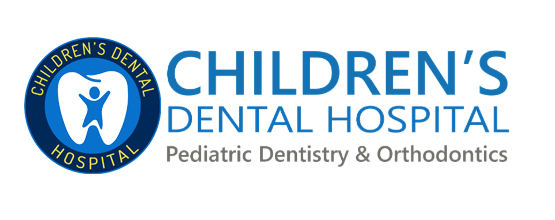WHY IS PREVENTION IMPORTANT?
Oral Health for Overall Health
The dental health of children needs a close watch. Dental health unfortunately isn’t at the top of the priority list, which can lead to tooth decay which can lead to discomfort and possibly an expensive treatment to fix the oral issue. Any lack in care can lead to caries and can even result in extracting a tooth. An extraction on a teenager or teenager can negatively affect your smile. At CDH we strongly believe extractions in youths can easily be prevented by taking less invasive measures.
Pulpotomies to avoid tooth removal?
Unbearable pain is present when there is an infected tooth. Before it was common to remove an infected tooth to keep the health of the other teeth healthy. Currently pulpotomies are used to save your child’s teeth from extraction. Pulpotomy is the removal of pulp from the top part of a tooth (pulpectomy is all the pulp from the pulp chamber), it is performed on children’s teeth. Pulp is the soft material with nerve fiber and micro blood vessels for growth of tooth found inside the enamel of the tooth. If the pulp becomes infected the pain can become intolerable due to a break in the dentin and enamel. In such a case pulpotomy is a last option that is available or extraction of the infected tooth can also be considered.

The Pulpotomy Procedure
Pulpotomy is a relatively easy procedure done by an experienced pediatric dentist here at CDH. These are the steps that are observed:
- Local anesthesia (L.A) is used by the infected tooth so during treatment the child can be pain-free and comfortable.
- Applying a rubber dam. Used to isolate the tooth and is a thin 6×6 inch sheet of Latex.
- Access to the pulp chamber. To get to the pulp chamber, the cavity is drilled into and the chamber is widened by drilling both the sides at the upper level.
- Removal of Coronal Pulp– From the previous step pulp is removed from the top portion of the pulp chamber using a round bur or excavator.
- Application of Medication– To avoid further infection antiseptic medicine is used in the chamber medication can include Formocresol and Ferric sulfate.
- Filling up the Chamber– the empty coronal chamber is filled with zinc oxide eugenol, which consists of a paste of zinc oxide and eugenol in clove oil.
- Coronal Restoration– The crown, is sealed with filling material the client has chosen.
- Crowning or capping– Because the tooth is weak from the drilling and can be destroyed by chewing a cap or crown is placed over the crown of the tooth. Normally the cap is made of stainless steel as it is temporary.
Dental Sealants for Children
Dental Sealants– Sealants are a great way to prevent the damage of caries. A sealant is a thin coating of clear plastic or other dental material which is applied to the chewing surfaces of molars that protects it.
Why are Sealants Needed? Sealants are needed as molars have natural groves in them which help trap food for better crushing and grinding. Yet decay can start if food is caught there and oral health is not being upkept. Because of this sealants seem like a good option as they are good for children who do not keep the best dental health. Sealants help prevent decay as well as smooth out the grooves. Sealants are even reported to have reduced the risk of caries in molars by nearly 80%. However, sealants are not the same as brushing and flossing they should not take their place in your oral health but seen more as a supplement for those who don’t brush regularly. Sealants can even prevent further damage to a cavity by being placed on top.
Dental Sealants for adults– Adults who are predispositioned to get molars can also get sealants for their teeth.
Dental Sealant Application Procedure– The treatment for sealants is basic.There is no anesthesia. However, scared children and kids may need to be pacified tHe following is for sealants:
- Cleaning– The dentist cleans the teeth and removes any plaque.
- Etching– So the sealant has a better grip on the tooth it is roughed up a bit before applying. For this purpose an etching chemical solution is applied for 10 to 15 seconds.
- Cleaning – The chemical is then removed by cleaning the teeth once again.
- Drying– After being cleaned the tooth or teeth are then air dried.
- Sealant application– Once the teeth are dry the sealant is brushed on the teeth.
- Curing– To seal the sealant blue light is shined on the teeth or tooth. The blue light is photons ,which are known to carry more energy than other colors. The sealant hardens and the procedure is complete.
Teeth Space Maintainers at CDH
- Space Maintainers-Purpose- If a young child loses a tooth or teeth to various reasons it is possible that the teeth that are there or coming in might try to make best of the space. This drift can affect the positioning and alignment of the teeth, because they grow in sockets vacated by the temporary teeth. This can affect both smile and bite. To keep the original smile expensive treatment may be necessary. Space maintainers can prevent that. It is a good idea to discuss with the pediatric dentist if you feel your child may need one. Once a maintainer is installed, more attention is necessary towards oral hygiene. With fixed space maintainers, sticky or chewy foods should be avoided.
- What are Space Maintainers? Space maintainers are custom made orthodontic devices that are placed into your mouth to reserve a space for a tooth or teeth that may erupt later. There are two categories for space maintainers.
- Removable space maintainers– Are generally made from acrylic and an artificial tooth may be placed in the gap
- Fixed Space Maintainers– There are four types of space maintainers.
- Unilateral space maintainers are attached by wrapping around a tooth and connects to a metal loop that covers the gap
- The crown and loop is similar, except it is held with a crown on the tooth
- The distal shoe has space reserved for the first molar. The space maintainer is inserted into the gum line on the opposite side.
- The Lingual maintainer is bilateral, meaning it has support on both sides. It may be cemented to the molars. It is used as a holding space for many teeth.
Tooth Extractions for kids
Tooth extractions are the last resort; However, there are situations where the extraction of a tooth can be necessary. The following situations are considered for tooth extractions.
- Teeth or tooth that cannot be restored.
- Having damaged teeth that don’t need to be restored.
- There is tooth which can cause problems if not removed. An example is an impacted wisdom tooth.
- For creating space for other teeth extraction is a possibility.
- Severely decayed tooth may be extracted as otherwise it can lead to a lot of pain.
Looking for a Pediatric dentist in Brooklyn?
If you are searching for a good pediatric oral surgeon in the Brooklyn area, or nearby, you have found one! At CDH you will find the best pediatric dentists to treat all dental problems of your young or teenage children. We are on Ocean Avenue, and corner of Kings Highway, near the Brooklyn Public Library. Our second location is on Myrtle Avenue, and corner of Emerson Place, near the Brooklyn Navy Yard.


